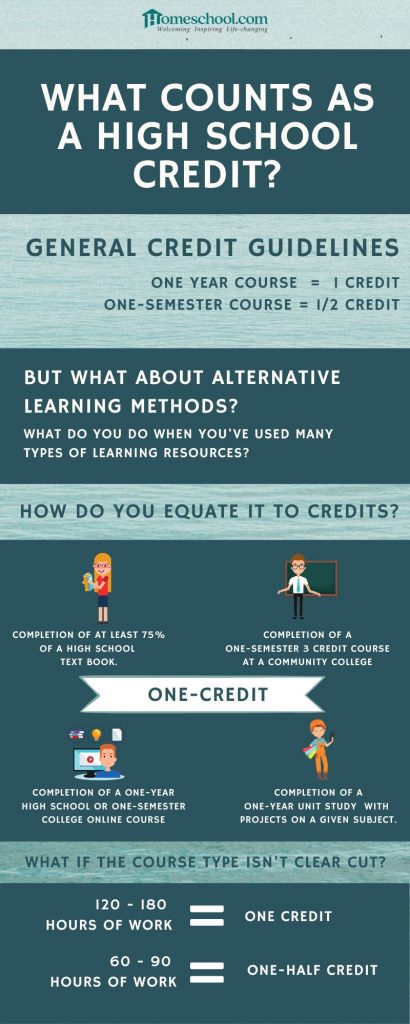We all want our high schoolers to be prepared for college or career success and transition easily to the future. High school documentation, such as a portfolio, a homeschool high school transcript, and a homeschool high school diploma, will likely be requested by university admissions in the application process or by an employer in the job application process. The last thing we want is admissions flagging the process due to a lack of essential high school paperwork. Homeschooled graduates need solid documents with confirming evidence for homeschool high school requirements — and that starts with actively planning high school credits.
Homeschooling high school credits are different from college credits and it can be confusing. If you feel anxious about the future college admissions paperwork, this guide and the downloads will put your mind at ease.
You’ll learn:
- How to Choose High School Courses
- How to Count High School Credits
- More Information for Homeschooling High School
How to Choose High School Courses
Your plan for high school courses is your path to earning credits. Before you start selecting courses, browse through a few colleges and universities to get a general feel for admissions requirements. While you’re not going to be too concerned about college yet when your teen is in ninth grade, it’s a good idea to have a plan.
Without a four-year high school plan, you could end up cramming and stressing in the eleventh and twelfth grades.
As for homeschool high school requirements per state, having a plan will help you stay on track and meet regulations each year. High school courses are intended to fulfill the baseline education expected of society and provide a roadmap to college. No, homeschooling high school is not only about university admissions. However, the homeschool high school transcript is the gateway to a college education, and a college education is necessary for most jobs these days. Don’t discount the value of higher education for future careers. When we focus on the details of credits and courses in high school, we are keeping the big picture in mind!
There is a series of steps in the planning stage. Planning doesn’t just involve deciding which courses sound interesting, applicable, or necessary, but also considering which courses will add sparkle to the transcript in the college application process.
Take these steps to create your high schooler’s 4-year-plan.
- Evaluate your goals
- Consider your teen’s goals
- Together, examine typical university requirements & objectives.
- Start with one subject at a time. Decide on four full-credit courses in that subject area (for example, chemistry or physics within science).
- Arrange those four courses in increasing difficulty or with prerequisites first. Now you have your ninth grade through twelfth-grade homeschool plan for that subject area!
- Repeat with the other core subjects (math, science, social studies, English).
- Choose electives for each year.
- Brainstorm community service ideas for high schoolers.
- Add specific requirements for universities that stand out.
- Now you have a four-year plan!
- Take a look at our career explorations course for more information.
How to Count High School Credits

Analyzing high school classes will be your starting point of credit planning. If you have utilized a variety of curriculum and resources for the bulk of their homeschooling, it can be challenging to determine the correct number of credits. For creating a homeschool high school transcript, every course taken in the ninth-twelfth grades needs to be listed with their corresponding credits.
While homeschoolers usually do not need to meet a state’s graduation standards, there are always exceptions, so be sure to check your laws. However, your state graduation standards can be a good guideline for planning your high schooler’s credits.
It’s common for college classes to count for 3-4 credits, but high school is different. A two-semester high school class, ranging from 120-180 hours, is considered one credit. Further, a one-semester class with around 60 hours is a half-credit.
This formula can apply to all types of homeschool resources. For example, even if you have printed off free worksheets or used library books for a year of English, if your students logged 120-180 hours of work and have the portfolio and grades as progress evidence, you can count that year of English as a full credit on his or her transcript.
Here is homeschool credit information at a glance!
- 1 credit: two-semester class
- ½ credit: one-semester class
- For a quick answer, break down the schoolwork into hours.
- Applicable to multiple formats of coursework
- Free resources count
- Co-op classes count
- Learning an instrument counts
- Bible study counts
- Online programs may have records automatically generated
More Information for Homeschooling High School
- College Admissions Requirements for High Schoolers
- Free Guide to Creating Homeschool High School Transcripts
- How to Graduate from High School Early
- High School Graduation Requirements by State
- Dual Enrollment Guide for High School Homeschooling




